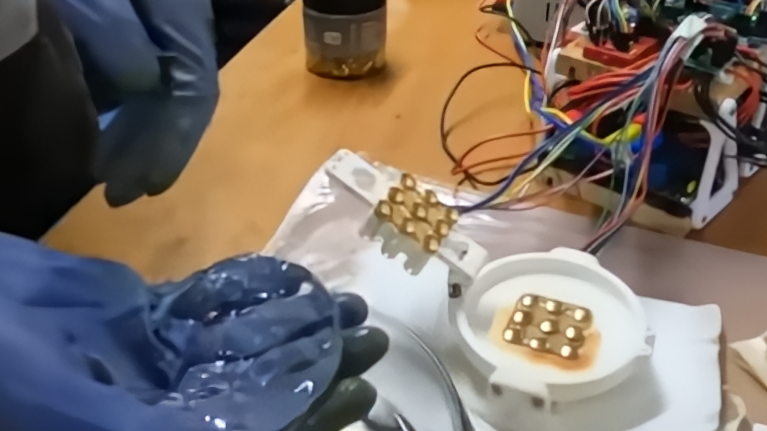Simple hydrogel 'brain' demonstrated playing Pong — it learned and improved over time
'This opens up exciting possibilities for developing new types of smart materials,' researchers claim.

Researchers from the University of Reading in the United Kingdom have successfully demonstrated limited "learning" behaviors from a simple electro-active polymer (EAP) hydrogel when interfaced with an electrode array. Per a research paper originally published in Cell Reports Physical Science and covered at length (including a video) by ScienceAlert, this was demonstrated by having the EAP gel control system play an adapted version of the all-time classic video game Pong. Moreover, the EAP gel control system or "brain" seemed to peak in its Pong-playing abilities after about twenty minutes.
So, how exactly did this happen and what does it mean? While an EAP gel control system certainly doesn't resemble conscious life in any way, it still demonstrates an emergent ability that the material wasn't designed for. As engineer Vincent Strong from the University of Reading explains, "The rate at which hydogel de-swells takes much longer than the time it takes for it to swell in the first place, meaning that the ions' next motion is influenced by its previous motion, which is sort of like memory occuring. The continued rearrangement of ions within the hydrogel is based off of previous rearrangements within the hydrogel, continuing back to when it was first made and had a homogeneous distribution of ions."
In essence, then, this seems to prove that EAP hydrogels have a lot more promise than their current typical usage would suggest. As Yoshikatsu Hayashi, also a biomedical engineer at the University of Reading, explains, "Our research shows that even very simple materials can exhibit complex, adaptive behaviors typically associated with living systems or sophisticated AI. This opens up exciting possibilities for developing new types of smart materials that can learn and adapt to their environment."
In the future, examples like this could lead to some huge advancements in fields like prosthetics, soft robotics, and adaptive materials, in general. As of now, it seems that the research mainly serves to prove the point that "systems of learning and adaptation in living systems might be more universal than previously thought". The researchers plan to continue experimenting with EAP hydrogels like this to find the limits of its "memory" capabilities and put it toward other tasks. In the past, they've also demonstrated the material's ability to mimic beating heart tissue.
Get Tom's Hardware's best news and in-depth reviews, straight to your inbox.

Christopher Harper has been a successful freelance tech writer specializing in PC hardware and gaming since 2015, and ghostwrote for various B2B clients in High School before that. Outside of work, Christopher is best known to friends and rivals as an active competitive player in various eSports (particularly fighting games and arena shooters) and a purveyor of music ranging from Jimi Hendrix to Killer Mike to the Sonic Adventure 2 soundtrack.
-
bit_user They showed how it developed a memory, but with serious practical limitations:Reply
"Eventually, the same mechanic that allows the gel to retain memory causes the polymer structure to beak down to a point where it inhibits conductivity and performance reduces."
More importantly, you need a lot more than a simple and direct A -> B logic, which I believe is all they showed. To build complex systems, you at least these elements that I think they haven't demonstrated:
inversion
isolation
negative reinforcement
Neural networks derive much of their power from their layered nature and conditional pair-wise independence. Perhaps they could introduce multiple layers of gel and insulators, to achieve some degree of isolation, but you have to introduce inversion and a mechanism for negative reinforcement, if you ever hope to implement neural network-like capabilities in this medium.
So, it could indeed be a useful way to build very simple memory into objects that can't easily accommodate traditional electronics, but I think using the term "brain" is seriously over-hyping the potential of this technology. Indeed, the original paper never uses the term "brain", in reference to their hydrogel:
https://www.cell.com/cell-reports-physical-science/fulltext/S2666-3864(24)00436-3
